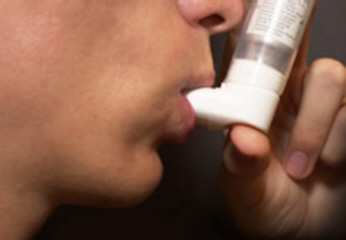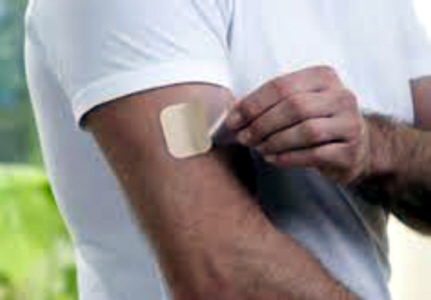���� ������������������������������������������������������������������������������������������������������������������������������
29th September 2013 - New research
HOUSEHOLD PESTICIIDES INCREASE THE
RISK OF PARKINSON'S DISEASE
International Journal of Epidemiology [2013] Sep 20 [Epub ahead of print]
(S.Narayan, Z.Liew, K.Paul, P.C.Lee, J.S.Sinsheimer, J.M.Bronstein, B.Ritz)
Complete abstract
Household pesticide use is widespread, and for over 40 years
organophosphorus chemicals have been common active ingredients in these
products. Parkinson's Disease has been linked to pesticide exposures but
little is known about the contributions of chronic exposures to household
pesticides.
 Consequently,
researchers investigated whether long term use of household pesticides,
especially those containing organophosphorus chemicals, increases the risk
of developing or worsening Parkinson's Disease. Frequent use of any
household pesticide increased the risk of developing Parkinson's Disease by
47%. Frequent� use of products containing organophosphorus chemicals
increased the risk of Parkinson's Disease by 71%. Frequent
organothiophosphate use almost doubled the risk of Parkinson's�
Disease.
The evidence shows that household use off
organophosphoruss
pesticides is clearly associated with an increased risk of Parkinson's
Disease. For a printable version of this article
click here. In order to
refer to this article on its own
click here.��
Consequently,
researchers investigated whether long term use of household pesticides,
especially those containing organophosphorus chemicals, increases the risk
of developing or worsening Parkinson's Disease. Frequent use of any
household pesticide increased the risk of developing Parkinson's Disease by
47%. Frequent� use of products containing organophosphorus chemicals
increased the risk of Parkinson's Disease by 71%. Frequent
organothiophosphate use almost doubled the risk of Parkinson's�
Disease.
The evidence shows that household use off
organophosphoruss
pesticides is clearly associated with an increased risk of Parkinson's
Disease. For a printable version of this article
click here. In order to
refer to this article on its own
click here.��
�
26th September 2013 - New research
THE WORLD'S LOWEST INCIDENCE OF PARKINSON'S DISEASE
Journal of� Neural Transmission [2013] Sep 22 [Epub ahead of print]
(C.L.Ma, L.Su, J.J.Xie, J.X.Long, P.Wu, L.Gu)
Complete abstract
The world's lowest incidence of Parkinson's Disease has been found to be
in China. Incidence is the rate at which Parkinson's Disease is being newly
diagnosed. The incidence of Parkinson's Disease in China, at only 2 people
per 100,000 is remarkably low. In constrast, the incidence rate in the
U.S.A. is about ten times that number. The prevalence of Parkinson's Disease
in China is remarkably high, with 797 per 100,000 being one of the highest
rates in the world. The ratio of men to women with Parkinson's Disease is,
at 1.29 men for every woman, more typical.
 With
very high prevalence (those people that have Parkinson's Disease now) and
very low incidence (those people that are being diagnosed) means that the
number of people in China with Parkinson's Disease must be dropping rapidly,
and at a greater rate than anywhere else in the world..The researchers provide no reasons for this.� In China, instead
of standard Parkinson's Disease drugs, people tend to use more Chinese
herbal remedies, a number of which are known to have effect in Parkinson's
Disease. For more information go too
Herbal Medicines for Parkinson's Disease
For a printable version of this article
click here. In order to
refer to this article on its own
click here.���
With
very high prevalence (those people that have Parkinson's Disease now) and
very low incidence (those people that are being diagnosed) means that the
number of people in China with Parkinson's Disease must be dropping rapidly,
and at a greater rate than anywhere else in the world..The researchers provide no reasons for this.� In China, instead
of standard Parkinson's Disease drugs, people tend to use more Chinese
herbal remedies, a number of which are known to have effect in Parkinson's
Disease. For more information go too
Herbal Medicines for Parkinson's Disease
For a printable version of this article
click here. In order to
refer to this article on its own
click here.���
The former Chinese leader Chairman Mao is known to have had Parkinson's
Disease. However, it is never disclosed in China that Chairman Mao, who is
given almost God like status in China, ever actually had Parkinson's
Disease.
�
22nd September 2013 - New research
THE EFFECT OF TEN YEARS WITH PARKINSON'S DISEASE
Parkinsonism Related Disorders [2012] 18 supplement, 3 : S10-S14 28 (3) :
380-383 (A.Hassan, S.S.Wu, P.Schmidt, I.A.Malaty, Y.F.Dai, J.M.Miyasaki,
M.S.Okun)
Complete abstract
A large number of people who had Parkinson's Disease for more than ten years
were assessed to see what effect it had on them. The clinical status and
health-related quality of life of patients reaching this milestone had not
been well documented before. Their average age was 68 years old. Their
average age of onset was 53 years old. Their average disease duration was 14
years. Many of them were minimally disabled (44%) or experiencing postural
instability (40%). Most (88%) were able to stand unaided but falls were
common (55%). Almost all (93%) were living at home, with a family member as
a regular caregiver (84%).
 They
had an average of two additional medical disorders with arthritis (49%) and
heart problems (32%) being the most common. Most of them� (87%) took at
least 2 medications, with L-dopa (96%), dopamine agonists (45%) and
antidepressants (37%) being the most common. Most of them were not currently
utilizing physical, occupational or speech therapy, but two-thirds of them
reported engaging in physical activity. Deep brain stimulation was
documented in 22%. Overall the mean health-related quality of life and
caregiver burden was impaired in all domains. For a printable
version of this article
click here.
In order to refer to this article on its own
click here.���
They
had an average of two additional medical disorders with arthritis (49%) and
heart problems (32%) being the most common. Most of them� (87%) took at
least 2 medications, with L-dopa (96%), dopamine agonists (45%) and
antidepressants (37%) being the most common. Most of them were not currently
utilizing physical, occupational or speech therapy, but two-thirds of them
reported engaging in physical activity. Deep brain stimulation was
documented in 22%. Overall the mean health-related quality of life and
caregiver burden was impaired in all domains. For a printable
version of this article
click here.
In order to refer to this article on its own
click here.���
�
21st September 2013 - New research
COFFEE INTAKE AND THE RISK OF DYSKINESIA
Movement Disorders [2013] 28 (3) : 380-383 (A.M.Wills, S.Eberly, M.Tennis,
A.E.Lang, S.Messing, D.Togasaki, C.M.Tanner, C.Kamp, J.F.Chen, D.Oakes,
M.P.McDermott, M.A.Schwarzschild)
��Complete abstract
Caffeine is a naturally occurring adenosine antagonist that is commonly
found in coffee, and to a lesser extent in tea, cola drinks, cocoa, and
chocolate. Adenosine antagonists reduce or prevent the development of
dyskinesia in animal models of L-dopa induced dyskinesia.
 Researchers
examined the association
between the intake of caffeine and� the time taken to develop
dyskinesia. Those people who consumed 12 ounces of coffee per
day, which is about two cups, reduced their likelihood of developing
dyskinesia to 61%. Those people who consumed 4 to 12 ounces of coffee per
day, which is less than two cups per day,
reduced their likelihood of developing dyskinesia to 73%.
The authors suggest tha these results support the possibility that
caffeine may reduce the likelihood of developing dyskinesia.
For a printable
version of this articlee
click here. In order to
refer to this article on its own
click here.���
Researchers
examined the association
between the intake of caffeine and� the time taken to develop
dyskinesia. Those people who consumed 12 ounces of coffee per
day, which is about two cups, reduced their likelihood of developing
dyskinesia to 61%. Those people who consumed 4 to 12 ounces of coffee per
day, which is less than two cups per day,
reduced their likelihood of developing dyskinesia to 73%.
The authors suggest tha these results support the possibility that
caffeine may reduce the likelihood of developing dyskinesia.
For a printable
version of this articlee
click here. In order to
refer to this article on its own
click here.���
�
16th September 2013 - News report
BILLY CONNOLLY DIAGNOSED WITH PARKINSON'S DISEASE
 The
70 year old
Scottish comedian Billy Connolly has been diagnosed with Parkinson's Disease
but has vowed to continue with his stage and screen career despite also having
prostate cancer. Besides being known for stand up comedy on television and in
large arenas he has appeared as a comedian and as a serious actor in films such
as The Last Samurai, The Hobbit,
Indecent Proposal, Muppet Treasure Island, and
Gulliver's Travels. For more information go to
Billy Connolly. Connolly�s spokesman
revealed that "Billy has been assured by experts that the findings will in no
way inhibit or affect his ability to work, and he will start filming a TV series
as well as undertaking an extensive theatrical tour." For more details go to
Daily Mail.
The
70 year old
Scottish comedian Billy Connolly has been diagnosed with Parkinson's Disease
but has vowed to continue with his stage and screen career despite also having
prostate cancer. Besides being known for stand up comedy on television and in
large arenas he has appeared as a comedian and as a serious actor in films such
as The Last Samurai, The Hobbit,
Indecent Proposal, Muppet Treasure Island, and
Gulliver's Travels. For more information go to
Billy Connolly. Connolly�s spokesman
revealed that "Billy has been assured by experts that the findings will in no
way inhibit or affect his ability to work, and he will start filming a TV series
as well as undertaking an extensive theatrical tour." For more details go to
Daily Mail.
�
9th September 2013 - New review
FUTURE FORMS OF L-DOPA FOR PARKINSON'S DISEASE
The forms of L-dopa presently being developed are likely to completely change
the way that L-dopa is used. They include Inhaled L-dopa, Dual layer L-dopa,
Subcutaneous L-dopa, L-dopa prodrug, Melevodopa and AcuForm.
Mucuna Pruriens has been a source of L-dopa since ancient times. As a drug,
L-dopa started out as a treatment on its own. Sinemet and Madopar combined
L-Dopa with a decarboxylase inhibitor in order to reduce the loss of L-dopa
before it was used. In order to spread out the effect of L-dopa, controlled
release versions of Sinemet and
 Madopar
were then produced, Stalevo added Entacapone to that combination. Entacapone
is a COMT inhibitor, which is able to slow down the degradation of L-dopa.
An improved version of Stalevo called ODM-101 is already being developed.
Parcopa is an orally disintegrating combination of L-dopa and carbidopa,
which is the same combination as Sinemet. Duodopa is a combination of L-dopa
and carbidopa in the form of a gel, which is administered throughout the day
using a portable pump directly into the small intestine through a surgically
placed tube.
Madopar
were then produced, Stalevo added Entacapone to that combination. Entacapone
is a COMT inhibitor, which is able to slow down the degradation of L-dopa.
An improved version of Stalevo called ODM-101 is already being developed.
Parcopa is an orally disintegrating combination of L-dopa and carbidopa,
which is the same combination as Sinemet. Duodopa is a combination of L-dopa
and carbidopa in the form of a gel, which is administered throughout the day
using a portable pump directly into the small intestine through a surgically
placed tube.
New forms of L-dopa presently being developed for the treatment of
Parkinson's Disease are :
-
Inhaled L-dopa (CVT-301), which is taken using
an inhaler, enables a far quicker effect than existing forms of L-dopa.
For more information go to
Inhaled L-dopa
-
Dual layer L-dopa (IPX054), which includes the immediate release
version of L-dopa and the controlled release version, is better than existing forms of L-dopa.
For more information go to
Dual layer L-dopa
-
Subcutaneous L-dopa (ND0612) is a combination of
L-dopa and carbidopa in a liquid formula administered continuously
sub-cutaneously through a patch pump. For more information go to
Subcutaneous L-dopa
-
L-dopa prodrug (XP21279) is rapidly converted in to
L-dopa only after it has been absorbed. This facilitates active and
efficient absorption into the body. For more information go to
L-dopa prodrug
-
Melevodopa is the methyl ester of L-dopa. As it is a
soluble neutral derivative it overcomes the insolubility and acidity of
L-dopa when used in continuous intravenous infusions. For more
information go to
Melevodopa
-
AcuForm in combination with L-dopa and
carbidopa (DM-1992) makes use of the properties of polymers that help to
deliver L-dopa over a longer period of time.
For more information go to
Acuform
For a
printable version of this article
click here.
In order to refer to this article on its own
click here.��
�
�
6th September 2013 - New research
SAFINAMIDE CLINICAL TRIAL RESULTS
European Journal of Neurology [2013] September 11 [Epub ahead of print]
(A.H.Schapira, F.Stocchi, R.Borgohain, M.Onofrj, M.Bhatt, P.Lorenzana,
V.Lucini, R.Giuliani, R.Anand)��
Complete abstract
Safinamide is believed to have both dopaminergic and non-dopaminergic
actions, including the inhibition of MAO-B and
inhibition of glutamate release..
It is undergoing� Phase III clinical development as a once-daily
add-on to dopamine agonists for the treatment of early Parkinson's Disease.
For more information go to
Safinamide
 In
a one year clinical trial people with Parkinson's Disease received 100mg or
200mg Safinamide daily. They were assessed according to how long it was
before they had to increase their dopamine agonist dose or add another
Parkinson's Disease treatment. People receiving 100 mg/day safinamide
experienced a significantly lower rate of intervention compared with
placebo, of 25% instead of 51% and a small delay before the need to increase
other Parkinson's Disease treatments of 9 days.
In
a one year clinical trial people with Parkinson's Disease received 100mg or
200mg Safinamide daily. They were assessed according to how long it was
before they had to increase their dopamine agonist dose or add another
Parkinson's Disease treatment. People receiving 100 mg/day safinamide
experienced a significantly lower rate of intervention compared with
placebo, of 25% instead of 51% and a small delay before the need to increase
other Parkinson's Disease treatments of 9 days.
In a previous study of once daily dosages of 50mg to 100mg Safinamide
improved Parkinson's Disease symptoms after six months and reduced "off"
time when added on to the use of existing Parkinson's Disease treatments.
However, the reduction in "off" time in comparison to the use of a placebo
was minimal. The increase in "on" time beyond that of a placebo was only 40
minutes for 50mg safinamide, and 50 minutes for 100mg safinamide. For more
information go to the
Complete abstract.
For a printable version of this article
click here.
In order to refer to this article on its own
click here.
�
4th September 2013 - New book
DEMENTIA WITH LEWY BODIES AND PARKINSON'S DISEASE DEMENTIA
J.Eric Ahlskog
PLoS One [2013] 8 (7) : e69738 (C.Q.Zhou, S.S.Li, Z.M.Chen, F.Q.Li, P.Lei,
G.G.Peng)
Complete abstract
A systematic review has been carried out on the clinical trials of
rotigotine transdermal patch, in order to evaluate the efficacy, tolerability,
and safety in Parkinson's Disease. Rotigotine transdermal patch is marketed as
Neupro. Neupro is a transdermal system that provides continuous delivery of
rotigotine, which is a dopamine agonist, for 24 hours following application to
intact skin.
�For more
information go to
Neupro.
.gif)
.gif)
 Consequently,
researchers investigated whether long term use of household pesticides,
especially those containing organophosphorus chemicals, increases the risk
of developing or worsening Parkinson's Disease. Frequent use of any
household pesticide increased the risk of developing Parkinson's Disease by
47%. Frequent� use of products containing organophosphorus chemicals
increased the risk of Parkinson's Disease by 71%. Frequent
organothiophosphate use almost doubled the risk of Parkinson's�
Disease.
Consequently,
researchers investigated whether long term use of household pesticides,
especially those containing organophosphorus chemicals, increases the risk
of developing or worsening Parkinson's Disease. Frequent use of any
household pesticide increased the risk of developing Parkinson's Disease by
47%. Frequent� use of products containing organophosphorus chemicals
increased the risk of Parkinson's Disease by 71%. Frequent
organothiophosphate use almost doubled the risk of Parkinson's�
Disease.
 With
very high prevalence (those people that have Parkinson's Disease now) and
very low incidence (those people that are being diagnosed) means that the
number of people in China with Parkinson's Disease must be dropping rapidly,
and at a greater rate than anywhere else in the world..The researchers provide no reasons for this.� In China, instead
of standard Parkinson's Disease drugs, people tend to use more Chinese
herbal remedies, a number of which are known to have effect in Parkinson's
Disease. For more information go too
With
very high prevalence (those people that have Parkinson's Disease now) and
very low incidence (those people that are being diagnosed) means that the
number of people in China with Parkinson's Disease must be dropping rapidly,
and at a greater rate than anywhere else in the world..The researchers provide no reasons for this.� In China, instead
of standard Parkinson's Disease drugs, people tend to use more Chinese
herbal remedies, a number of which are known to have effect in Parkinson's
Disease. For more information go too
 They
had an average of two additional medical disorders with arthritis (49%) and
heart problems (32%) being the most common. Most of them� (87%) took at
least 2 medications, with L-dopa (96%), dopamine agonists (45%) and
antidepressants (37%) being the most common. Most of them were not currently
utilizing physical, occupational or speech therapy, but two-thirds of them
reported engaging in physical activity. Deep brain stimulation was
documented in 22%. Overall the mean health-related quality of life and
caregiver burden was impaired in all domains. For a printable
version of this article
They
had an average of two additional medical disorders with arthritis (49%) and
heart problems (32%) being the most common. Most of them� (87%) took at
least 2 medications, with L-dopa (96%), dopamine agonists (45%) and
antidepressants (37%) being the most common. Most of them were not currently
utilizing physical, occupational or speech therapy, but two-thirds of them
reported engaging in physical activity. Deep brain stimulation was
documented in 22%. Overall the mean health-related quality of life and
caregiver burden was impaired in all domains. For a printable
version of this article
 Researchers
examined the association
between the intake of caffeine and� the time taken to develop
dyskinesia. Those people who consumed 12 ounces of coffee per
day, which is about two cups, reduced their likelihood of developing
dyskinesia to 61%. Those people who consumed 4 to 12 ounces of coffee per
day, which is less than two cups per day,
reduced their likelihood of developing dyskinesia to 73%.
The authors suggest tha these results support the possibility that
caffeine may reduce the likelihood of developing dyskinesia.
For a printable
version of this articlee
Researchers
examined the association
between the intake of caffeine and� the time taken to develop
dyskinesia. Those people who consumed 12 ounces of coffee per
day, which is about two cups, reduced their likelihood of developing
dyskinesia to 61%. Those people who consumed 4 to 12 ounces of coffee per
day, which is less than two cups per day,
reduced their likelihood of developing dyskinesia to 73%.
The authors suggest tha these results support the possibility that
caffeine may reduce the likelihood of developing dyskinesia.
For a printable
version of this articlee
 The
70 year old
Scottish comedian Billy Connolly has been diagnosed with Parkinson's Disease
but has vowed to continue with his stage and screen career despite also having
prostate cancer. Besides being known for stand up comedy on television and in
large arenas he has appeared as a comedian and as a serious actor in films such
as The Last Samurai, The Hobbit,
Indecent Proposal, Muppet Treasure Island, and
Gulliver's Travels. For more information go to
The
70 year old
Scottish comedian Billy Connolly has been diagnosed with Parkinson's Disease
but has vowed to continue with his stage and screen career despite also having
prostate cancer. Besides being known for stand up comedy on television and in
large arenas he has appeared as a comedian and as a serious actor in films such
as The Last Samurai, The Hobbit,
Indecent Proposal, Muppet Treasure Island, and
Gulliver's Travels. For more information go to


 Publisher's
description : In Dementia with Lewy Bodies and Parkinson's Disease Dementia, Dr.
J. Eric Ahlskog draws on 30 years of clinical and research work at Mayo Clinic
to arm patients and families with crucial information that will enable them to
work in tandem with their doctors. Dr. Ahlskog clearly explains all aspects of
these disorders, their causes, symptoms, most effective drug treatments, proper
doses, and which medications to avoid. He also discusses the complications that
can arise in treating these conditions, given the variety of available
medications and their possible side effects and interactions. Dr. Ahlskog shows
that optimal medical treatment can markedly improve the quality of life for both
patients and family.
Publisher's
description : In Dementia with Lewy Bodies and Parkinson's Disease Dementia, Dr.
J. Eric Ahlskog draws on 30 years of clinical and research work at Mayo Clinic
to arm patients and families with crucial information that will enable them to
work in tandem with their doctors. Dr. Ahlskog clearly explains all aspects of
these disorders, their causes, symptoms, most effective drug treatments, proper
doses, and which medications to avoid. He also discusses the complications that
can arise in treating these conditions, given the variety of available
medications and their possible side effects and interactions. Dr. Ahlskog shows
that optimal medical treatment can markedly improve the quality of life for both
patients and family.
 The
use of rotigotine resulted in greater improvements in Parkinson's Disease
symptom scores (the UPDRS) concerning the activities of daily living score,
motor score, and the activities of daily living and motor subtotal score.
However, rotigotine was associated with a significantly higher rate of
withdrawals due to adverse events, and higher rates of application site
reactions, vomiting, and dyskinesia. No differences were found in the relative
risks of headache, constipation, back pain, diarrhea, or serious adverse events.���For
a printable version of this article
The
use of rotigotine resulted in greater improvements in Parkinson's Disease
symptom scores (the UPDRS) concerning the activities of daily living score,
motor score, and the activities of daily living and motor subtotal score.
However, rotigotine was associated with a significantly higher rate of
withdrawals due to adverse events, and higher rates of application site
reactions, vomiting, and dyskinesia. No differences were found in the relative
risks of headache, constipation, back pain, diarrhea, or serious adverse events.���For
a printable version of this article